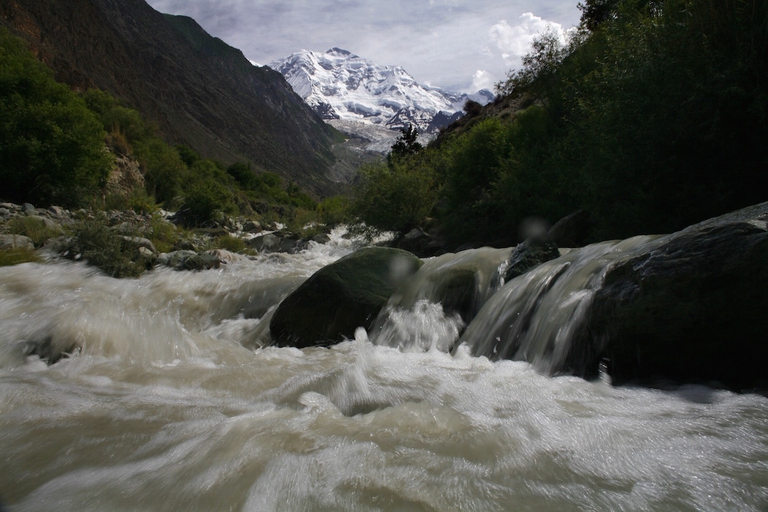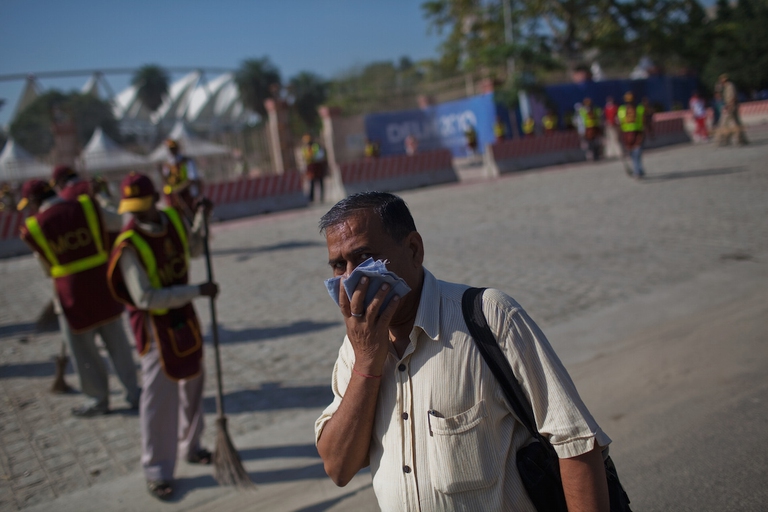
The Copernicus service has released data for the first eleven months of 2025: global warming is set to come close to last year’s record.
In India, i ghiacciai dell’Himalaya sono sempre meno in grado di garantire l’acqua necessaria al sistema agricolo. E Nuova Delhi è immersa nell’inquinamento.
Melting Himalayan glaciers, drier and drier farming lands, the capital’s inhabitants exposed to toxic substances in the atmosphere: India is on track to become world’s most densely populated country and overtake China in ten years but it is dramatically dealing with the issue of climate change.
The agency AFP reported Shakil Ahmad Romshoo’s words, scientist at the University of Cachemire who studied the effects of temperature increase in the Himalayan region. Here, at least two large glaciers have disappeared over the last fifty years. Others shrinked of about 27%. A huge problem for a nation that depends on these sources for water supply: “The impact of climate change is loud and clear and this is evident from rapid shrinkage of glacier which is the storage house of water for all purpose”.
Due to glacier retreat, some farmers had to give up rice crops, which require large amounts of water. Haji Mohammad Rajab Dar, a seventy-year-old inhabitant of the Chandigam village explained that “all the snow melt on the mountains now melts away by April when we actually start needing it for agriculture. I used to get 230 to 260 sacks of rice from my fields. It is reduced to just 90 this year. So we are ruined and turning into beggars slowly”.
In October, the Dalai Lama called for the protection of Tibet, another country strongly affected by climate change: “This blue planet is our only home – he explained – and Tibet is its roof. As vital as the Arctic and Antarctic, it is the third pole”. The Tibetan huge plateau is seeing a twice as rapid temperature rise than the global average: this threatens seven large rivers in India as well as in Bangladesh, China and other neighbouring countries.
All this is caused by human activities and, in particular, by energy production. And it’s exactly because of coal plants as well as increased car traffic that a few thousand kilometers to the east of the Himalayas, seventeen million inhabitants of the Indian capital are exposed to high pollution levels. In hospitals, the number of people suffering from respiratory problems is rising and the most affected ones are children.
In the city, the amount of Pm2.5 fine dusts in the atmosphere, the most dangerous ones for the health, exceeds by fifteen times the limit set by the World Health Organisation. This problem is even more serious in the winter: between December 2014 and January 2015 the levels topped 226 mcg per cubic metre. For this reason, according to a study conducted by German Institute Max Planck, New Delhi could record the highest number of premature deaths due to air pollution by 2025.
Siamo anche su WhatsApp. Segui il canale ufficiale LifeGate per restare aggiornata, aggiornato sulle ultime notizie e sulle nostre attività.
![]()
Quest'opera è distribuita con Licenza Creative Commons Attribuzione - Non commerciale - Non opere derivate 4.0 Internazionale.
The Copernicus service has released data for the first eleven months of 2025: global warming is set to come close to last year’s record.
The European Council and Parliament have reached an agreement on the European Commission’s proposal to deregulate new GMOs. But farming, organic agriculture, and environmental organizations are calling for it to be stopped.
Several hundreds of women in India have rejuvenated vast stretch of forest land through a unique method of guarding the forest.
The solution developed by the Italian startup Agri-E enables on-site bioethanol production, promoting energy self-sufficiency for farms.
South African court dismisses a major lawsuit by 140,000 Zambian women and children against Anglo American for Kabwe lead poisoning. A setback for affected communities enduring the lasting impact of lead contamination.
Controversial African land deals by Blue Carbon face skepticism regarding their environmental impact and doubts about the company’s track record, raising concerns about potential divergence from authentic environmental initiatives.
Majuli, the world’s largest river island in Assam State of India is quickly disappearing into the Brahmaputra river due to soil erosion.
Food imported into the EU aren’t subject to the same production standards as European food. The introduction of mirror clauses would ensure reciprocity while also encouraging the agroecological transition.
Sikkim is a hilly State in north-east India. Surrounded by villages that attracts outsiders thanks to its soothing calmness and natural beauty.










